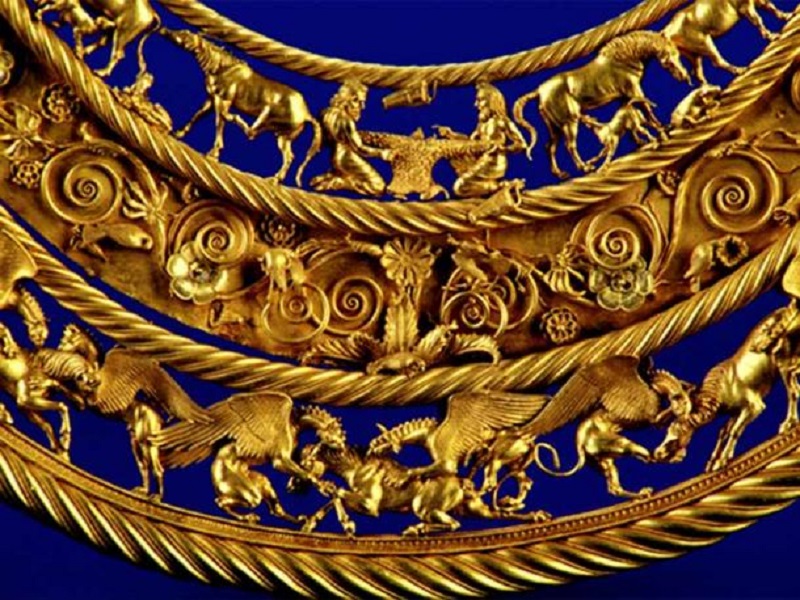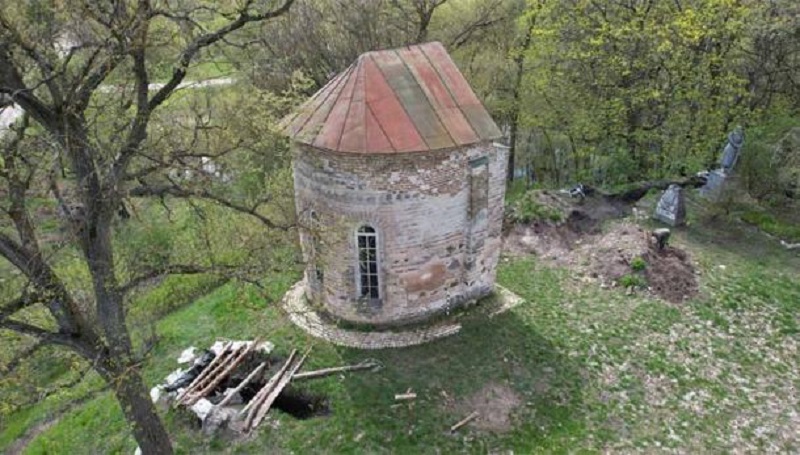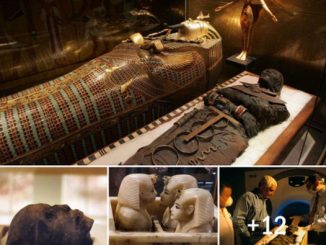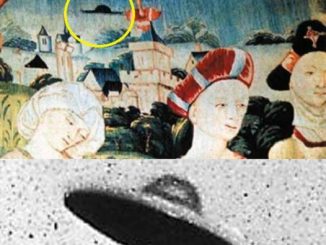Ukraine is holding a repatriation ceremony for Scythian gold treasure, marking a “symbolic and historic” victory over Russia in a long-running dispute over ownership. The artifacts, including a rare ancient gold ornament and a solid gold helmet, were unveiled in Kyiv on Tuesday. This collection, a treasure of Ukraine, consisting of 1,000 objects, was loaned by four museums in Crimea for an exhibition in the Netherlands in 2013.
Ukrainian Treasure: Dutch Court Decree Provides Legal Restitution
While the artifacts remained abroad, Russia annexed the Black Sea peninsula. Both Ukraine and museums in Moscow-occupied territory subsequently made competing claims about the Scythian finds. After a lengthy legal battle, the Dutch Supreme Court ruled in June that the items legally belonged to Ukraine.
“We have returned home not only the valuable assets taken out of Crimea in 2013 but also the part of our history”. “For us and our country as a whole, this case is symbolic. It shows that Ukraine never gives up what belongs to it by law.”
Taking note of the court’s decision, the Allard Pierson Museum in Amsterdam took the artifacts from the archive and transported them to Kyiv in a truck. The long-awaited return culminated on Sunday when the treasure was transferred to the Pechersk Lavra monastery in the Ukrainian capital.
“This is an exceptional case in which cultural heritage has become a victim of development,” Els van der Plas, director of Allard Pierson, said in a statement published by the museum, as quoted by Art News. geopolitical development”. “Once it became clear in 2014 that a judge would consider the case, we focused on storing the artifacts safely until they were returned to their rightful owners. We are pleased that clarity has emerged and that they have now been returned.”
Ukraine’s treasure was brought back to the country, Scythian gold artifacts, dating back to the 4th century BC. (Free artistic license)
The National Museum has confirmed the safe arrival of 565 artifacts from Amsterdam, including ancient sculptures, Scythian and Sarmatian jewelry and Chinese lacquer boxes. This valuable collection will be kept at the museum, waiting for the liberation of Crimea.
The regional children’s library, a Ukrainian treasure, was once the Vasyl Tarnovsky Museum of Ukrainian Antiquities. Pictures after the bombing. (Viacheslav Skorokhod/ Antiquities )
Archaeological Destruction: The War on Cultural Heritage
Archaeologists are currently carrying out the first field survey of Ukraine’s archaeological sites since the invasion in February 2022. These findings reveal the staggering extent of damage to Ukraine’s cultural heritage, reminiscent of the destruction witnessed during World War II.
A recently published article in the journal Antiquity reveals the traumatic impact of war, outlining the damage to thousands of archaeological sites, including previously unrecorded sites. Among the dead was at least one UNESCO site and several dating back about a thousand years. The article sheds light on the urgent need for coordinated efforts to mitigate the ongoing threat to the region’s archaeological treasures.
Princely Barrow at Boldyni Hoy, dating from the 10th-11th centuries AD, shows signs of damage from a missile attack. (Serhii Tarabarov/ Antiquities )
The devastation caused by the ongoing conflict has also spread to underground heritage, with explosions and trenching causing damage to archaeological sites. Among the casualties was Boldyni Hory, an important 11th-century necropolis, which is now facing irreparable damage. Notably, this UNESCO site houses a children’s library, formerly the Vasyl Tarnovsky Museum of Ukrainian Antiquities. UNESCO maintains a list of 331 sites believed to have suffered damage.
The remains of an 11th-century chapel show the remains of a bunker and trench, revealing excavation through the foundations of the buildings. (Archaeological Landscape/Antiquities Monitoring Group)
Scholars highlighted the severe impact on the hills near Kyiv, with extensive damage reported. Many churches and structures, some dating back 900 to 1,000 years, were affected. Sadly, the destruction of historic buildings often coincides with the loss of life, as these places, such as theaters and churches, continue to serve as cultural and social centers. festival. The ongoing destruction underscores the urgent need for efforts to protect and preserve Ukraine’s rich historical and cultural heritage.
The invasion not only caused the tragic loss of life and displacement of many Ukrainians but also saw a deliberate campaign targeting cultural heritage, aimed at erasing history and public memory, poses a profound threat to Ukraine’s rich historical heritage.
Top image: An example of the incredible craftsmanship and advanced gold metallurgy that set Scythian goldsmiths apart from their contemporaries. Source: victor21041958 /Adobe Stock





